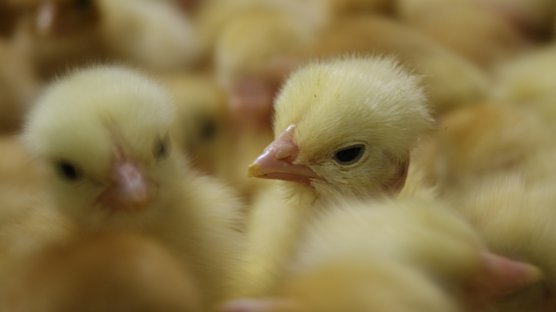
Published on June 30, 2024
Different types of nests
The type of nests used in your reproduction building is an important element to consider in the management of your farm. In this article, we will analyze two types of nests: manual nests and nests with automatic collection. The aim is to understand the difference between these two types of nests, but also to identify the technical tips and errors to be avoided, so that you will have all the tools you need to manage efficiently your livestock.
There are two main nest types in reproduction:
- manual nests in wood or metal
- nests with automatic collection.
So-called manual nests
Wooden nests must be soaked in chlorine during the cleaning and disinfection of the building phase.
The perch on the level at the bottom of a manual nest must make it possible to access the top level, which itself should be easily accessible.
Example: 3 bars for the perch on the bottom level to enable taking flight comfortably and a minimum of 2 bars on the upper level to allow good reception (see figure opposite).
The perches must be mobile and capable of locking access to the nests (1).
Ideally these perches are raised at night to prevent the females coming to sleep in the nests and soiling them with their droppings. Of course this means going into the building in the morning when the light is turned on to open all the nests before laying.
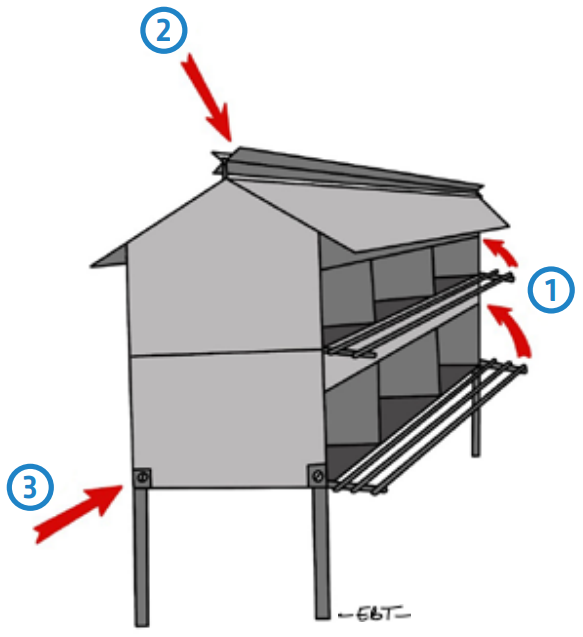
Figure 138: Illustration of a two-storey manual metal nest.
To produce eggs with good hygiene quality and good commercial chicks, it is essential to control the cleanliness of the nests and the floor. To do this it is necessary:
- to remove the droppings from the nests every morning before laying starts
- to put shavings or straw in the nests once a week
- to empty the nests and refill with litter if broken eggs are found or if the nests are soiled. Never leave a nest without litter.
2 to 3 times during the laying period, the nests must be emptied completely and the litter totally renewed. So as not to disturb the flock, this operation is performed several times, by series of nests.
Technical tip
To prevent the hens perching on the nests, several technique systems can be put in place like rollers, thin cables or mobile pallets (2).
The nest height must be sufficient to allow the passage of the roosters, otherwise the females can hide themselves there and lay on the floor or even sit on the eggs. Another solution is not to place the nests too high so that the females cannot access them. In all cases the feet must be removable (3).
The reception capacity of each compartment depends of the strain of breeding hen:
SA51A/SA31A: 4-5 hens per nest
SA31L: 3-4 hens per nest
Errors to be avoided
When the buildings are open (as is often the case in tropical areas) care must be taken so that the nests are not placed along the building near the openings. Sunlight could heat the nests (particularly metal nests) and dissuade the hens from using them. The ventilation air circuits must never be directed onto the nests because the hens hate draughts, particularly when laying.
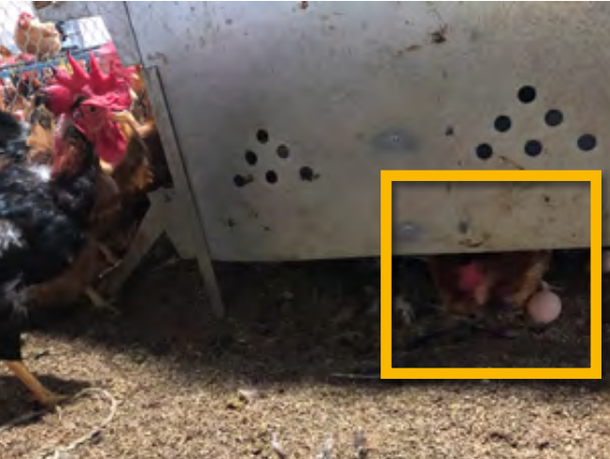
Figure 139: The females are hidden under the nests, the males cannot come and disturb them. The females take advantage of this shady and quiet refuge to lay eggs on the ground and incubate them. The nests should be raised further or lowered so that even the females cannot get through.
Nests with automatic collection
This type of nest improves livestock farmers’ quality of life whilst providing impeccable egg quality. It requires careful installation and particular attention paid to the equipment surrounding it.
Access to the automatic nest is facilitated by:
- slats for which the slope remains moderate and the height of which does not exceed 40 to 45 cm,
- the drinker, located on the slats, but not facing the nest entrance so as not to block access.
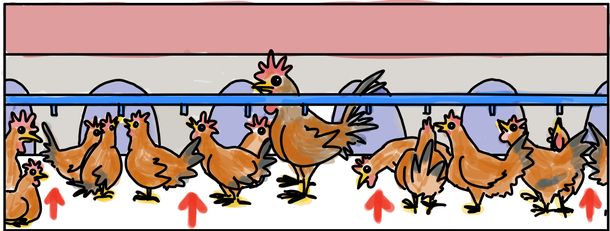
Figure 140: The animals stand along the row of nipples, which makes it difficult to access the nests.
REMINDER: Rows of nipples block access to the automatic nests on the slats when they are used. Bell drinkers make it possible to keep easy access to the nests whilst facilitating drinking. In addition, the nipples system is difficult to regulate when dwarf strains (like the SASSO females) and non-dwarf strains (like the SASSO males) are reared at the same time. We therefore recommend the bell drinker system when the building has automatic nests.
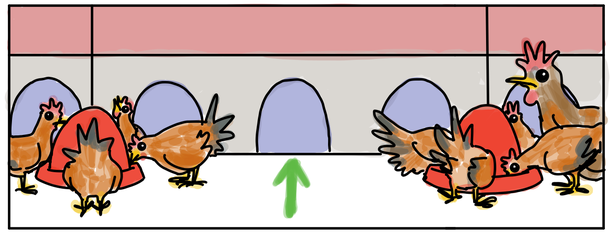
Figure 141: The spaces between the siphon troughs are clear, allowing easy access to the nests.
Similarly rooster feeders are placed along the partition of the building so that the males do not prevent the females from accessing the nests by forming a barrier. The feed chains for the females are placed on the floor or on the slats. In the case of installation with 2/3 of the floor surface covered by a slats, a chain on the floor will favour the activity of the males.
The farmer must monitor the opening and closing of the nests as well as the tension of the egg collection belt (to prevent cracked eggs).
The day the animals arrive, the openings to the nests are closed. The day after the hens arrive the nests are opened so that the hens start to visit them.
With this type of installation floor laying must be monitored in particular. Eggs laid on the floor must be collected several times a day because the hens stimulate each other to lay on the floor and sit on the eggs.
The dimensions of an automatic nest compartment are 45 cm deep with a length of 1.15 m. For these dimensions the visiting frequency is 53 hens for the dwarf strains (SA51A, SA31A, etc.) and 43 hens for the non-dwarf strains such as SA31L.
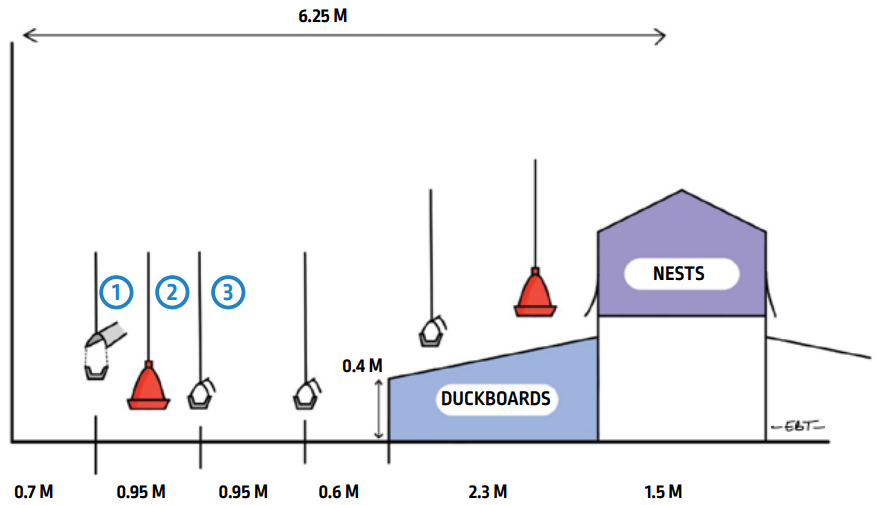
Figure 142: Organisation of a building with automatic nests and rooster feeders (1), bell drinkers (2) and hen feeders (3).
The optimal width of a laying building is 12.5 m in order to allow good transverse ventilation.
The rooster feeders are located against the walls, raised and covered with a protective gutter. Then a row of drinkers and feeders for females is arranged (protected from the roosters by a grille as mentioned earlier). A second row of female feeders is laid out and then slats with a maximum height of 40 to 45cm.
A row of additional female feeders and a line of drinkers may be set out on the slats. The drinkers will be preferably bell drinkers so as to leave easy access to the nests.


